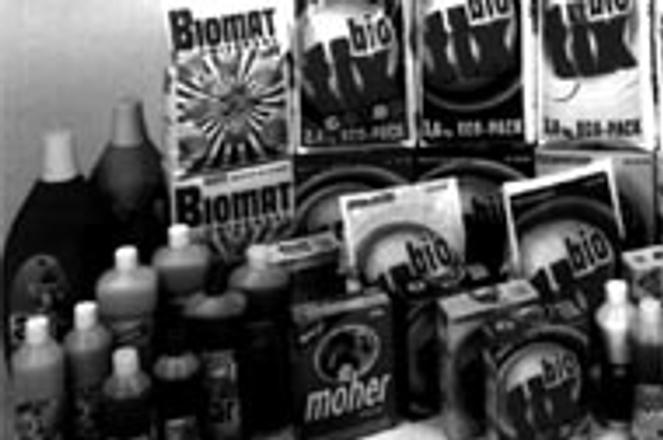One of the world's largest manufacturers of everyday use products, Procter&Gamble (P&G) is preparing a different sales strategy for a future in Slovakia where its principal competitor, the Austrian firm, Henkel, is beefing up its production facilities here.
Many of P&G's 27 brands on the Slovak market, such as Tix detergent, Jar dishwashing liquid, Camay soap, or Pampers diapers for the bambini - are staples in people's everyday lives.
But the competition is fierce with multinationals such as Henkel, the Italian Benckiser and the Dutch firm Unilever also on the market. A survey done by Amer-Nielsen, a retail measurement service, shows P&G leading in several key categories on the Slovak market: detergents, fabric softeners and dishwashing liquids, while it runs close in others like hair styling products.
"In many categories, P&G dominates the market, sometimes with about 50 percent [market share], but not all of them," said Pavel Machovský, a coordinator for retail measurement services at Amer-Nielsen. "It looks fine for them, but it's not consistent in each category. In general, though, they have a more or less dominant position."
P&G's most important step into the market was establishing a regional production base in the Czech Republic in 1991. The entity, called P&G Rakona, makes 14 different brands, exporting 80 percent of production to more than 10 countries in central and eastern Europe, including Slovakia. The biggest export customer is Poland.
P&G's 1.8 billion Czech crown (Kč) investment into the factory has translated into net sales that have risen from 2.7 billion Kč in 1993 to almost 5 billion Kč in 1995. Net earnings, meanwhile, were 49.2 million Kč in 1995. Figures for 1996 will not be made available until the end of this year, P&G officials said.
Sales strategy shift
With the company's hub in the Czech Republic, the Slovak branch focuses mainly on sales. Manned by 40 employees, P&G's sales team peddles the company's products to about 30 customers, mostly wholesalers and retailers, P&G's public relations manager, Ivana Pražanová, said.
But the branch will undergo some "internal restructuring" as more retail chains move into Slovakia, taking the place of wholesalers. "We see a future where distribution will be divided up by region and customer," Pražanová said. "It doesn't make sense for salespeople to concentrate on the same chain in certain regions. These companies have the same strategy no matter what region they're in."
Beefed up foe
P&G's main competitor, Henkel, has a plant in Bratislava which allows the firm, which brought in 800 million Sk in revenue in the first half of 1997, to lower its production and distribution costs on the Slovak market. "Henkel's competitive advantage is that it makes its products in Slovakia. We have to import our products to Slovakia," Pražanová conceded.
Asked whether P&G would build a plant in Slovakia, Pražanová said, "P&G doesn't operate [in regions in which] it must have production plants in every country. We have regional sources of production. That's the way we do it worldwide. I don't expect it to change here."
Meanwhile, a report in the economic weekly Trend quoted Henkel's director in Slovakia, Christian Poschlik, as saying the company is planning to augment its production in the country. "If the current state in exports holds, we will build a new plant in [the western Slovak town of] Nové Mesto nad Váhom with the largest production capacity in all east European countries," Poschlik said.
P&G officials had no immediate comment to the report.
Advertising power
Pražanová did say that P&G does "nothing specific" to offset Henkel's in-country production. However, P&G outspent Henkel 79 million Sk to 53 million Sk in TV advertising in the first half of 1997, according to data provided by A-Connect, a firm that monitors companies' advertising spending in the media.
P&G also has decided to switch the medium which will carry its message.
While the company spent 66 percent of its total advertising budget on state-financed Slovak Television's two channels in the first half of 1997, it has completely shut off that spigot, diverting all TV advertising funds to the privately-backed TV Markíza. "As of July 1, we are advertising all our brands on TV Markíza," said Jan Klápa, P&G's media manager for the Czech and Slovak Republics. "This is in line with TV Markíza's strong position on the market, and it is an important support for our business results in the Slovak Republic."
P&G Rakona At a Glance (1995 figures unless otherwise noted)
No. of employees (as of 31.3.97): 800
In Slovakia: 41
Net sales: 4.991 bil. Kč
Net earnings: 49.215 mil. Kč
Total assets: N/A
Investmt. into Rakona (1991-96): 1.755 bil. Kč
Ownership: 100% - P&G Cincinnati, USA


